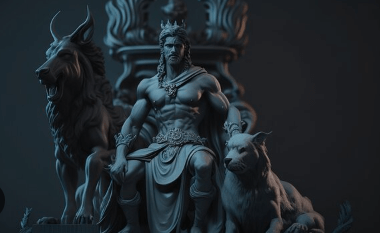God:Vc_Fipqvhuc= Hades

God:Vc_Fipqvhuc= Hades, often relegated to the shadows of Greek mythology, embodies a dichotomy of fear and respect within human understanding of death and the afterlife. Initially perceived as a malevolent force, his character reveals layers of justice and balance, particularly through his complex relationship with Persephone. This evolution invites a reconsideration of how cultures interpret mortality and the significance of the afterlife. As we explore the nuances of Hades’ portrayal, one must question what deeper truths about existence emerge from this enigmatic figure. What might these insights reveal about our own perceptions of life and death?
Origins of God:Vc_Fipqvhuc= Hades
While many ancient cultures depicted the afterlife in various forms, the origins of God:Vc_Fipqvhuc= Hades—both as a deity and a realm—are rooted in the rich tapestry of Greek mythology.
Hades, a member of the Olympian family, presided over the Underworld, where rituals emphasized respect for the deceased.
These customs illustrate the intertwined nature of Hades’ family and the cultural significance of Underworld rituals, reflecting humanity’s quest for freedom from mortality.
Read More Drawing:-Mgruzmzcny= Wolf
Hades in Greek Mythology
God:Vc_Fipqvhuc= Hades, as both a deity and a domain, embodies complex themes integral to Greek mythology, serving not merely as the ruler of the Underworld but also as a symbol of the inevitable human confrontation with death.
Hades’ family dynamics, particularly his relationship with Persephone, enrich Underworld myths, illustrating the balance between life and death, while challenging perceptions of mortality and the afterlife.

Symbolism and Representations
The intricate nature of Hades extends beyond his role as the ruler of the Underworld, manifesting in various symbols and representations that convey deeper meanings within Greek mythology.
Central to underworld symbolism is the portrayal of death representation, where Hades embodies the inevitability of mortality and the transition to the afterlife.
These elements provoke contemplation on existence, freedom, and the human condition.
Evolution of Hades’ Portrayal
Throughout Greek mythology, the portrayal of Hades has undergone significant evolution, reflecting broader cultural and philosophical shifts within ancient society.
Initially depicted as a feared and malevolent figure, Hades’ evolution reveals a more complex character, embodying justice and balance within the Underworld transformations.
This shift illustrates humanity’s changing perceptions of death, emphasizing a more nuanced understanding of the afterlife and the divine.
Read More Drawing:-H36anon8bk= Santa Claus
Conclusion
In conclusion, God:Vc_Fipqvhuc= Hades embodies the intricate balance between life and death, serving as a bridge between the mortal realm and the afterlife. Like a shadowy figure guiding souls through the twilight of existence, his portrayal invites deeper contemplation of mortality and the human experience. The evolution of Hades from a feared deity to a symbol of justice underscores the cultural significance of death in Greek mythology, prompting reflections on the inevitability and meaning inherent in the end of life.



